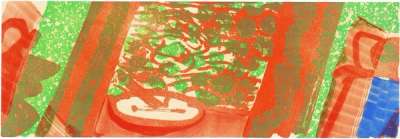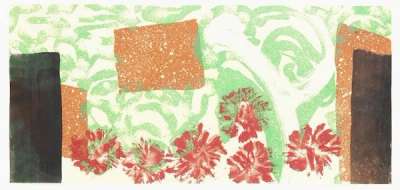
In Touch, Checking In

In Touch, Checking In
Signed Print
Howard Hodgkin
Price data unavailable
AAGR (5 years) This estimate blends recent public auction records with our own private sale data and network demand.
There aren't enough data points on this work for a comprehensive result. Please speak to a specialist by making an enquiry.
Medium: Intaglio
Edition size: 50
Year: 1991
Size: H 29cm x W 42cm
Signed: Yes
Format: Signed Print
Track this artwork in realtime
Watch artwork, manage valuations, track your portfolio and return against your collection
Track auction value trend
Auction Results
| Auction Date | Auction House | Location | Hammer Price | Return to Seller | Buyer Paid |
|---|---|---|---|---|---|
| November 2022 | Bonhams New York | United States | |||
| April 2022 | Sworders | United Kingdom | |||
| April 2019 | Christie's London | United Kingdom | |||
| April 2001 | Christie's London | United Kingdom |
Meaning & Analysis
This signed etching from 1991 is a limited edition of 50 from Howard Hodgkin’s The Way We Live Now series. The horizontal print is strikingly representational and simple if compared to the other paintings of this same series. The depiction of an old, black telephone typical of the 1980s dominates the work on an ivory background, accompanied by red and green tones.
In Touch, Checking In, represents the third of the paintings Hodgkin realised in 1991 to visually accompany his dear friend Susan Sontag’s 1986 book, The Way We Live Now. Whilst in the first two plates the artist focused on an abstract language of colour to convey the nostalgia and astonishment that the protagonists of Sontag’s book face throughout the narration, this print uses the depiction of an old telephone as emblematic of the sudden sense of proximity and intimacy lived by the gay community in New York throughout the AIDS pandemic.
Sontag’s book narrated the story of a man who suddenly falls ill with AIDS, and followed, through many dialogues, the lives of the anonymous man’s community of friends and ex-lovers, who, although strangers, suddenly find a common ground for group bonding in the illness that their friend is living. As such, as the narration unfolds, the book follows the formation of a group identity, based on a growing concern with the meaning of life and the fear of death.
Hodgkin’s phone, as the title suggests, visually emblematises the newly created proximity found by the friends of the ill man throughout the book. Telephones allowed contact and meaningful connections to be made between what were otherwise simple acquaintances. Hodgkin’s unusual depiction, despite its simplicity, poignantly evokes a defining moment of American gay culture and identity, one marked by loss, fear and death, but also by closeness and solidarity.


